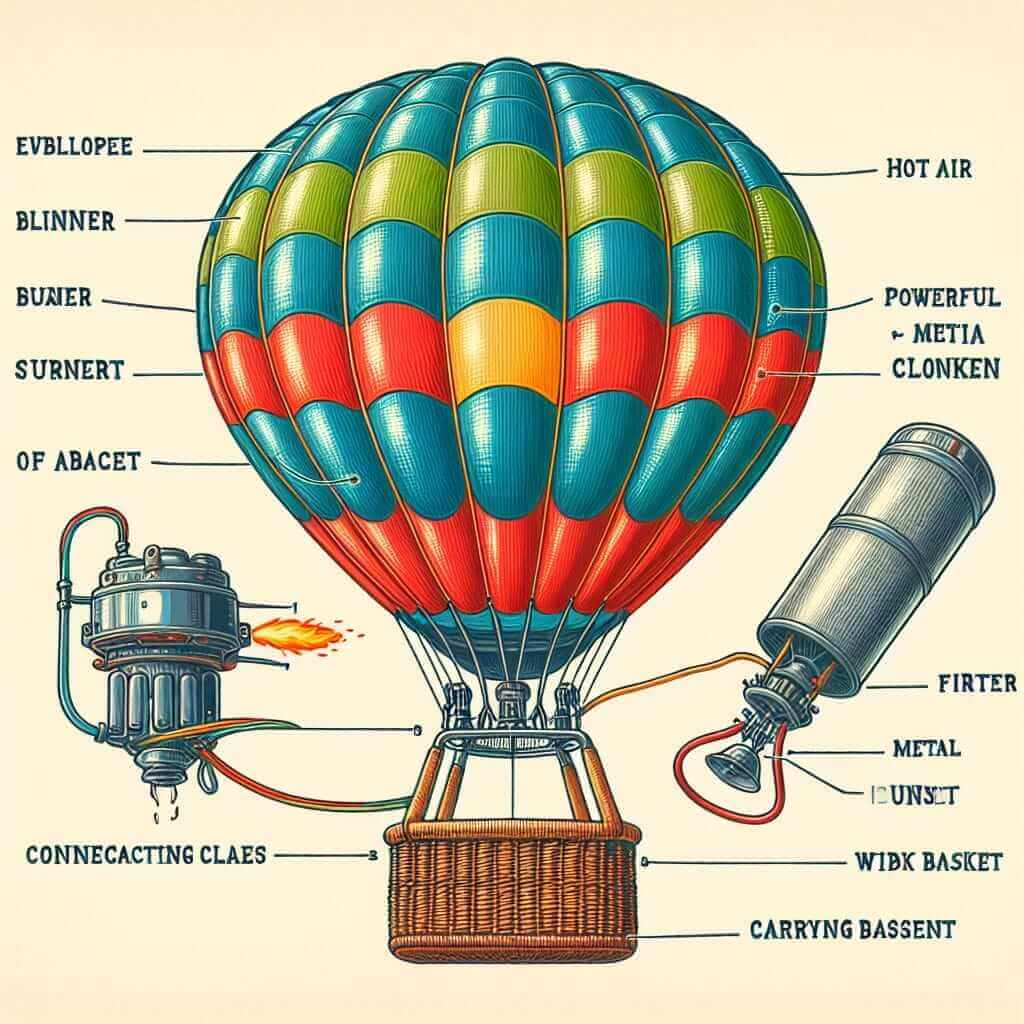As an IELTS instructor with over two decades of experience, I’ve encountered numerous topics that frequently pop up in the IELTS Speaking test. One such topic that often takes candidates by surprise is the operation of a hot air balloon. While seemingly simple, articulating this process clearly and confidently requires a firm grasp of scientific vocabulary and coherent explanation.
This article will equip you with the essential knowledge and vocabulary to confidently tackle any hot air balloon-related questions in your IELTS Speaking test. We’ll delve into the science behind it, provide practical vocabulary, and offer tips on structuring your response for maximum impact.
Why Describing a Hot Air Balloon Matters in IELTS
The IELTS Speaking test assesses your ability to communicate effectively in English. This involves not only fluency and pronunciation, but also your capacity to explain concepts clearly and use a wide range of vocabulary accurately.
The topic of hot air balloons often arises as examiners use it to gauge your ability to:
- Explain a scientific process: You’ll need to demonstrate an understanding of basic physics principles like heat, density, and buoyancy.
- Use descriptive language: Vividly describing the balloon’s components and its ascent requires a good command of adjectives and adverbs.
- Structure your response logically: A well-structured explanation showcases your ability to organize thoughts coherently.
How Hot Air Balloons Work: A Breakdown
Let’s break down the science behind hot air balloons into digestible chunks:
1. The Envelope:
This is the large, often colorful, fabric bag that holds the hot air. It’s typically made from nylon or polyester, chosen for their strength and lightweight properties.
2. The Burner:
Positioned beneath the envelope’s opening, the burner uses propane to heat the air inside the envelope.
3. The Basket:
This is where the passengers and pilot stand. It’s attached to the bottom of the envelope by strong cables.
4. The Science of Buoyancy:
- Heating the Air: When the burner heats the air inside the envelope, the air molecules spread out (expand), making the air inside the balloon less dense than the cooler air outside.
- The Power of Buoyancy: Because the hot air inside the balloon is lighter than the surrounding air, it rises, taking the envelope and basket along with it.
- Controlling Altitude: To ascend higher, the pilot activates the burner to heat the air further. To descend, the pilot allows the air inside the balloon to cool, making it more dense.
 Hot Air Balloon Components
Hot Air Balloon Components
IELTS Speaking Sample Response
Let’s imagine the examiner asks you: “Can you describe how a hot air balloon works?”
Here’s a sample response incorporating the vocabulary and structure we’ve discussed:
“Certainly! A hot air balloon essentially operates on the principle of buoyancy. It consists of three main components: a large fabric envelope, a burner system located beneath the envelope, and a basket for passengers.
The burner uses propane to heat the air inside the envelope. As the air heats up, it becomes less dense than the cooler air outside. This difference in density creates buoyancy, causing the balloon to rise, much like how a cork floats to the surface of water. To control the altitude, the pilot can adjust the intensity of the burner. Increasing the heat makes the balloon ascend, while allowing the air to cool causes it to descend.”
Tips for Success
- Practice Makes Perfect: Rehearse explaining the process using the vocabulary you’ve learned.
- Think Like the Examiner: Anticipate potential follow-up questions, such as the materials used in the balloon or the history of hot air ballooning.
- Stay Calm and Composed: Speaking clearly and confidently is key. If you stumble, take a breath and rephrase.
Remember, demonstrating your ability to explain complex processes in a clear and concise manner is crucial for achieving a high score in the IELTS Speaking test. With practice and preparation, you can confidently discuss even seemingly challenging topics like hot air balloons.


